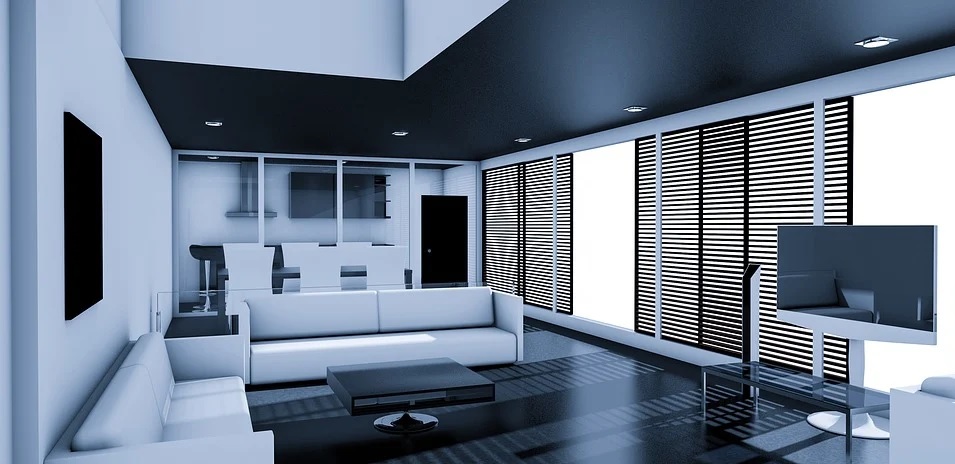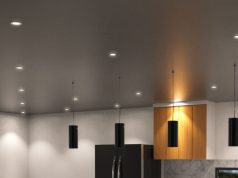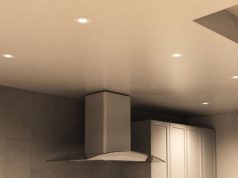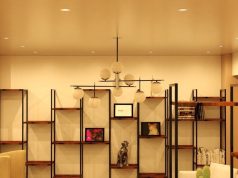If you are looking for the most cutting-edge downlights available, then LED downlights are, without a doubt, the longest-lasting and also the most energy-efficient.
In this article, we are going to look at what LED downlights are, their benefits, and what to consider before you purchase.
What are LED Downlights?
We can separate this into two, namely what are downlights and what is LED lighting. It’s likely that you know what a downlight is, but maybe you aren’t as clued up on LEDs.
A downlight is a light fitting that is usually recessed into the ceiling and illuminates the area below. They can be installed in most rooms, as well as outdoors, but they are commonly used for bathrooms and kitchens. They take up very little space and are suitable for both ambient or task lighting.
LED or Light Emitting Diode technology has been around since the 1960s when it was used for practical electronic components such as indicator lights. In recent years their use has widened to include white light LED for lighting rooms and outdoor areas. As well as the innovative developments that have led to them becoming more widespread in our homes, the price of LEDs has dropped considerably over the last few years.
While the initial upfront cost of LED bulbs is more significant than traditional incandescent bulbs, they are far more energy-efficient and last considerably longer, substantially saving money with reduced household energy bills. They can last anywhere between 10 and 30 times longer than their traditional counterparts, which also consume 90% more energy than LED light bulbs.
What To Consider When Choosing LED Downlighting
Now that you understand what LED downlights are and the vast benefits they offer, there are some considerations to take notice of before purchasing.
The Colour Temperature
The first thing to explore is the colour temperature of the LED downlight bulb. This is measured in Kelvins [K]; the lower the number of Kelvins, the warmer the light will be. Warm white is less than 4000K, and somewhere between 2700K and 3200k would be recommended for an area that you tend to relax in, such as your bedroom or living room. Cool white is over 4000K and is the best choice for bathrooms and kitchens where a bright light would be more favourable.
Colour Rendering Index
Not as important as colour temperature, but still something to consider is the colour rendering index [CRI]. The CRI on a scale from 0 to 100 measures the accuracy of how colours are shown under a light. The Higher the CRI, the more accurate it will be. If showing off the various shades of furniture and fittings is crucial to you, then pick LED lights that are CRI 95+. Many of us who have become used to incandescent and halogen bulbs that have CRI ratings of 99 won’t want too big a drop in light quality, so it’s best to go for higher CRI-rated LEDs.
The Beam Angle
The beam angle is something you need to think about before you choose your LED downlights; it dictates how narrow or wide the spread of light is and is measured in degrees.
For a large room like a living room or somewhere you want general ambient lighting, it is generally recommended you go for a wide beam spread of 60°. For smaller rooms such as bathrooms, a medium beam spread of 40° would be adequate. If you want to provide more concentrated accent lighting to focus on a specific area or have a high ceiling, then choose a narrow beam spread of 25°.
Lumens and Watts
When it comes to lumens and watts, this is when we see people’s eyes glazing over, ready to switch off! But they play an essential role when choosing your LED downlights, so take a few minutes to read this section, and we’ll be sure you will thank us later!
For traditional lighting, usually, the higher the wattage, the brighter the light, but when it comes to LED lights, this isn’t necessarily the case. When it comes to purchasing new LED downlights, you should look at the lumen (lm) output to ensure you get the amount of brightness you require. The Higher the lumens, the brighter the light.
In the past, for traditional lighting such as halogen, you would check the wattage to establish how bright the light would be. However, due to LED’s energy-efficient technology, the wattage tends to be always low. So, for this reason, we measure the brightness in lumens. With Energy-efficient lighting, you want to maintain the same amount of light output but reduce the wattage. For instance, let’s take a halogen downlight that uses 55W and compare it to a 10W LED one, the LED downlight will provide twice as much brightness as the halogen.
Location and Placement
As with most types of lighting, its placement can impact how it performs. If your downlights are placed close to each other, for instance, it could result in uneven lighting. We’ve already mentioned lumens, beam angle, and colour temperature, so you should consider these on a room-by-room basis.
You’ll need to take into account factors such as the height of the ceilings if you require general lighting, task or accent lighting, and how the downlights are going to be spaced. You’ll also want to make sure that you double-check all measurements taking into account that the fixtures are going to be larger than the actual light.
Some interior decorators suggest leaving a gap of around a metre between the downlights and the ceiling edge as if they are positioned too close to the corners of the room; they can cause shadows. Of course, how you place your downlights is entirely up to you.!
The Trim
Downlights, unlike pendants or chandeliers, aren’t really designed as statement pieces; ideally, they should fit seamlessly with the ceiling and allow the light to be the star of the show. The trim will be the only part of the downlight that can be viewed, so it is essential that you find the finish that suits the room it is situated in. It’s not going to interfere with how the downlight performs but can add to the aesthetics of the room. There are plenty of different finishes to choose from satin or polished chrome and brass nickel.
If you want them the trim to blend in more with the ceiling, go for white trim. If you’re going to go really minimalist, then look for timeless or plaster-in downlights. Trimless downlights have a bezel visible as it is plastered around.
Fire-Rated Downlights
It is common for most downlights to come fire rated as standard nowadays if you are installing them for home use. Commercial downlights due to the way the ceilings are constructed are generally not required to be fire rated. Though most light fixtures are thoroughly tested for fire safety, fire-rated downlights offer even more protection giving extra peace of mind to the safety-conscious.
Dimmers
While a dimmer isn’t a requirement when you install your downlights, it is undoubtedly an addition to consider. It will give much more flexibility to how you use your lights. A dimmer can change the ambience and atmosphere of a room with the push of a button. We can go from a powerful light when we need to view our environment closely, and then when it’s time to relax, dial it down to something more subtle.
If you do want dimmers, then do your homework and verify that the downlight is dimmable. While many LEDs are dimmable, some of the cheaper models aren’t. Also, you should check which dimmers the downlights are compatible with; they may need specific dimmers for LEDs or may not be compatible with the dimmers that you have already installed in your home.
Ingress Protection
The Ingress Protection [IP] rating signifies how resistant a light fitting is to dirt and water. Environments that are dusty or wet will require a higher IP rating.
Ip ratings comprise of a two-digit number, for example, IP67. The first digit number from 0 to 6 relates to how the light fitting holds up to solid objects such as dust. The second digit number from 0 to 9 indicates how waterproof the light fitting is.
If you are installing a downlight in a bathroom, it should be rated at least IP44 to be extra safe; an IP67 rating indicates that it is protected when totally immersed in water up to 1 meter. For outdoor downlights, you should consider the IP65 rating.
Final Thoughts
There you have it, there are plenty of considerations to think about before installing LED downlights, but now you have the knowledge needed to purchase them in total confidence. The benefits of LEDs are enormous; they are energy-efficient, extraordinarily long-lasting, and eco-friendly. Compared to old-fashioned halogen and incandescent lights, you will make significant savings, even if the initial outlay might be a little more costly. With white downlights, paring it with a white fan heater as an accessory is not a bad thing.
What more could you want from a light fixture? Combined with the sleek design of modern downlights, you have a match made in heaven.













